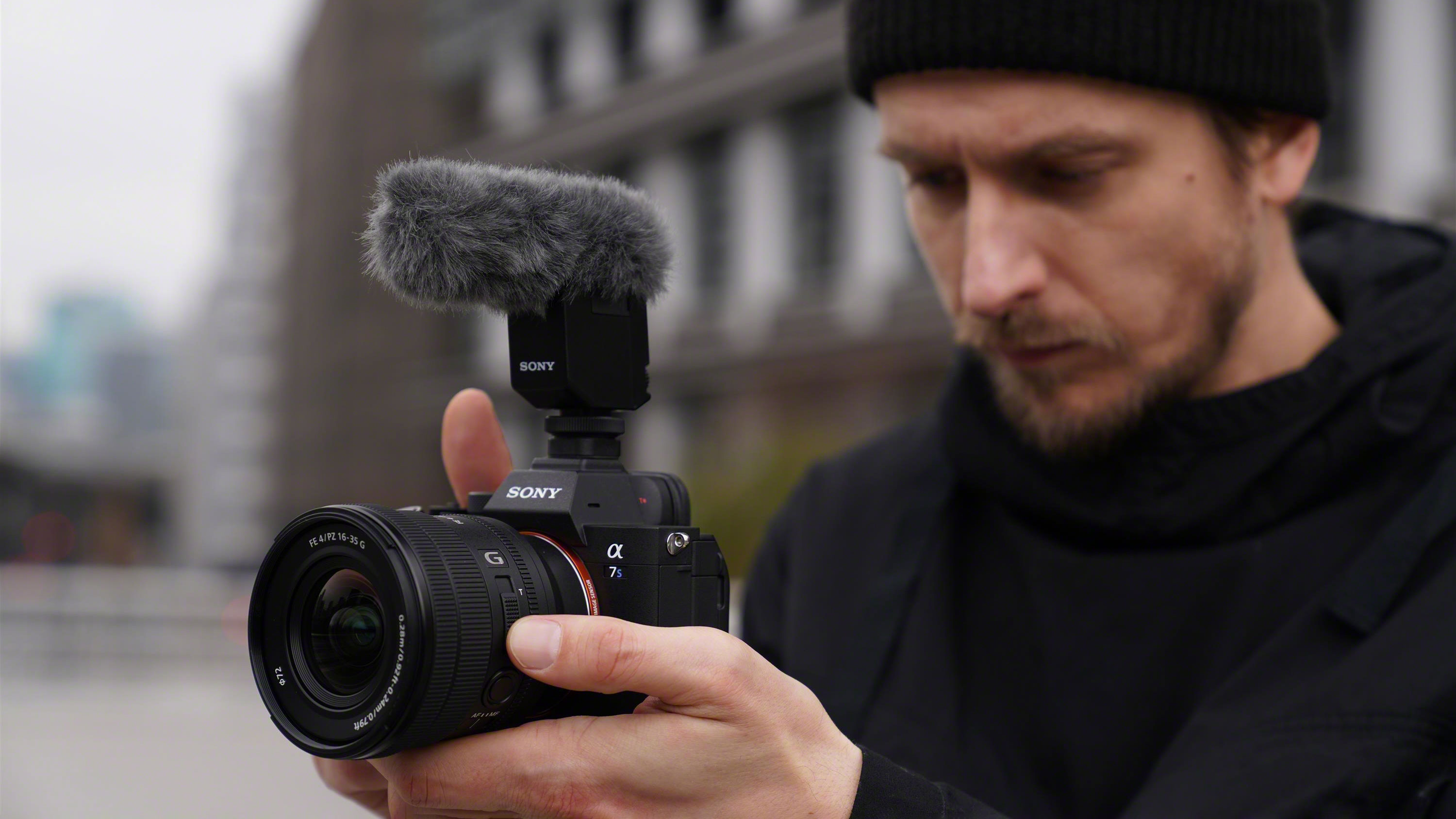Sony launches full frame FE PZ 16-35mm f/4 G power zoom lens… but why?
What is a power zoom lens, why would you want one, and does it make this 16-35mm a cine lens?

The Sony FE PZ 16-35mm f/4 G lens is designed to fit Sony’s full frame mirrorless cameras as an ultra-wide zoom but with a powered zoom action rather than a regular zoom ring.
Instead of a zoom ring, the lens has a ’T’ (telephoto) and a ‘W’ (wide-angle) rocker switch. You push one way to increase the zoom setting and the other way to decrease it.
We’ve seen this before on Sony APS-C lenses like the E PZ 16-50mm F3.5-5.6 OSS pancake kit lens, E PZ 18-105mm F4 G OSS and E PZ 18-110mm F4 G OSS cine lens.
Power zooms have some advantages for film-making because it means you can zoom while filming with a much smoother action. Indeed, Sony already makes a handful of PZ lenses for its APS-C cameras, and this is the second for its full frame models, joining the FE C 16-35mm T3.1 cine lens.
So why have two power-zoom 16-35mm full frame lenses? Perhaps because the FE C 16-35mm T3.1 is a true cine lens with geared focus and iris rings and, indeed, a geared zoom ring. The point of geared rings is that they allow the attachment of powered controllers for vibration-free operation during recording. The FE C 16-35mm T3.1 is also VERY expensive at around $5,500/£6000.
Sony FE PZ 16-35mm f/4 G key features
Sony is billing this as "the World’s Lightest Compact Constant F4 Wide-Angle Power Zoom G Lens", which is definitely is as it is also the only one. Key features include the use of Sony's XD (extreme dynamic) Linear Motors not just for the AF actuator but for the zoom control too, which also has variable zoom speed.
The overall barrel length remains the same even when focusing or zooming, which should make the new lens a little more manageable on a gimbal – as will its surprisingly modest weight of just 353g. The Sony FE PZ 16-35mm f/4 G is also dust and moisture resistant.
The best camera deals, reviews, product advice, and unmissable photography news, direct to your inbox!
The optical configuration includes two AA (advanced aspherical) elements, a standard aspherical element, one Super ED (Extra-low Dispersion) and one ED glass element, and one ED aspherical element. This allows a minimum focusing distance of 0.28m at 16mm focal length and 0.24m at 35mm focal length. A circular aperture and "carefully designed spherical aberration" aim to deliver smooth, deep, full frame bokeh.
Perhaps the most interesting aspect of this lens is its price. At $1,399.99 / £1,299 / AU$1,999, it's not much more expensive than the much older Vario-Tessar T* FE 16-35mm F4 ZA OSS, though while it might be expected to provide more modern optical performance than the Zeiss, it doesn't have built-in stabilization.
This is actually looking like a pretty crowded lens sector for Sony now. It already has the FE 16-35mm F2.8 GM and cheaper Vario-Tessar T* FE 16-35mm F4 ZA OSS optics with exactly the same focal range as the new lens.
The key difference is the power zoom feature. The new Sony lens may appeal to filmmakers and vloggers who want a power zoom function without the expense and bulk of a full-on cine lens.
Sony FE PZ 16-35mm f/4 G price and availability
The Sony FE PZ 16-35mm f/4 G is expected to arrive in late April 2022 in some markets and will cost $1,399.99/£1,299. If you're in Australia, you'll need to wait till early May 2022, and it will set you back AU$1,999.
• US: Pre-order the Sony FE PZ 16-35mm f/4 G at B&H
• US: Pre-order the Sony FE PZ 16-35mm f/4 G at Adorama
• UK: Pre-order the Sony FE PZ 16-35mm f/4 G at Wex
• UK: Pre-order the Sony FE PZ 16-35mm f/4 G at Park Cameras
• AU: Pre-order the Sony FE PZ 16-35mm f/4 G from Sony Australia
Read more
Best Sony cameras
Best Sony lenses

Rod is an independent photography journalist and editor, and a long-standing Digital Camera World contributor, having previously worked as DCW's Group Reviews editor. Before that he has been technique editor on N-Photo, Head of Testing for the photography division and Camera Channel editor on TechRadar, as well as contributing to many other publications. He has been writing about photography technique, photo editing and digital cameras since they first appeared, and before that began his career writing about film photography. He has used and reviewed practically every interchangeable lens camera launched in the past 20 years, from entry-level DSLRs to medium format cameras, together with lenses, tripods, gimbals, light meters, camera bags and more. Rod has his own camera gear blog at fotovolo.com but also writes about photo-editing applications and techniques at lifeafterphotoshop.com


